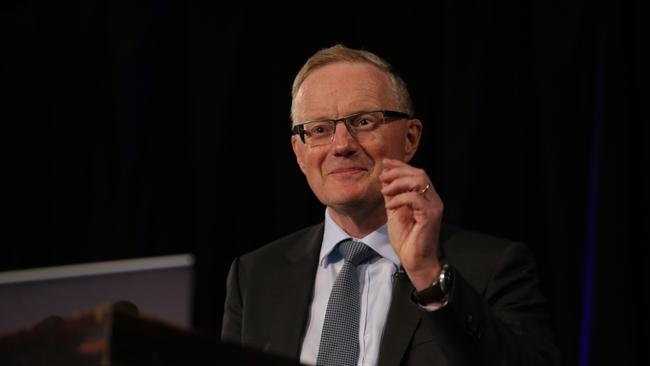The RBA’s big fail spells big pain ahead
The key takeout from the decision to do 25 points and not the minimum 50 points required is that the RBA has also locked itself into doing no more than 25 points in December.

Business
Don't miss out on the headlines from Business. Followed categories will be added to My News.
Oh dear. Big fail from Reserve Bank governor Philip Lowe and arguably even more from his board of seemingly pusillanimous directors.
Even more extraordinarily, the statement from Lowe actually spelt out the fail – one presumes, utterly unknowingly.
The key takeout from the decision to do 25 points and not the minimum 50 points required is that the RBA has also locked itself into doing no more than 25 points in December.
It then goes to sleep for two months, doing nothing until early February, when it will start 2023 with a far too-low policy interest rate, facing much higher inflation that – incredibly - yesterday’s statement actually admitted it expected would be coming!
A month ago, at the October meeting, the RBA seriously debated between doing another 50-pointer and the 25-pointer that it actually delivered.
We only found that out in the minutes of the meeting two weeks later, not in the statement from Lowe after the meeting itself.
The key point is that the RBA back then considered doing a 50-pointer when it believed inflation would top out at 7.75 per cent, then plunge - oh so conveniently – to just 4 per cent in 2023, and go down to the 3 per cent top of its target range by the end of 2024.
Now, as Lowe spelt out Tuesday, the RBA expects inflation to peak higher “around” 8 per cent, still plunge in 2023 but now ‘only’ to 4.75 per cent; and finish “above” - no longer “around” – 3 per cent by the end of 2024.
So how does doing a 25-pointer in November, and effectively locking in no more than a 25-pointer in December make any sense?
A month ago the RBA seriously considered doing 50 points when it thought inflation was going to at least get back to the top end of its target – far, far too slowly, I must add - by the end of 2024.
Now, after getting higher than it expected inflation numbers and no longer believes it will get back to target even in two years, it walked away from its duty to do 50 points.
The seemingly slight shift in the end-2024 forecast is no small thing.
It is now saying it expects to fail in delivering on its inflation mandate even two years out!
And, you have to say, that’s putting the best gloss on it. Its forecasts of rapidly falling inflation next year are seriously, and I mean seriously, well, ‘optimistic’.
The consequence of this all-round fail of analysis, of judgment and determination to do the one job it is mandated to do – and explicitly accepted by governor Lowe - will almost certainly mean more interest rate and economic pain for Australians.
It will mean rates dribbling higher through 2023 as the RBA continues to, belatedly, chase the inflation tiger. It means rates go higher and staying higher for longer.
And that’s assuming we do actually start to see inflation falling sharply eventually.
It really doesn’t bear thinking about if we get to the end of 2023 and inflation is still north – hopefully, not too far north – of 6 per cent.
Or worse, if we actually have started to see wage rises across the economy chasing that higher inflation reality.
Lowe claimed that the RBA had increased rates “materially”” since May.
Surely he understands only in nominal terms not in real terms.
Before May the RBA rate was still only 0.1 per cent, the inflation rate was 5.1 per cent. The real RBA rate was minus 5 per cent.
Yes, the rate is now 2.85 per cent, but inflation rate is 7.3 per cent (and headed higher).
The real RBA rate is still a highly stimulatory minus 4.45 per cent – barely tighter than it was before May.



